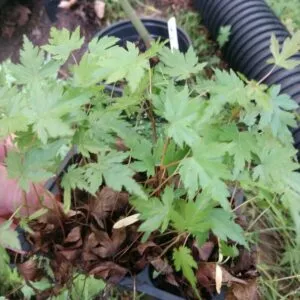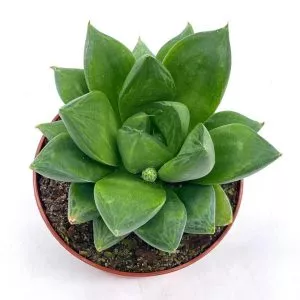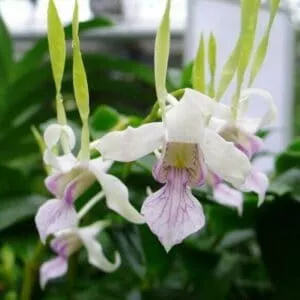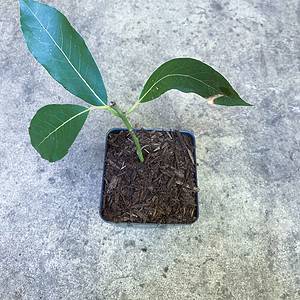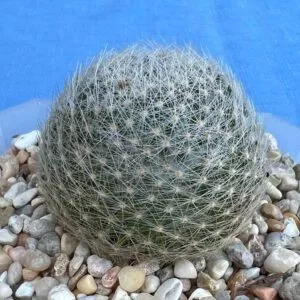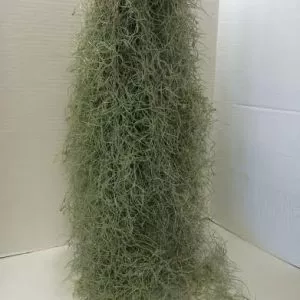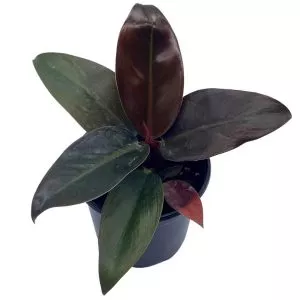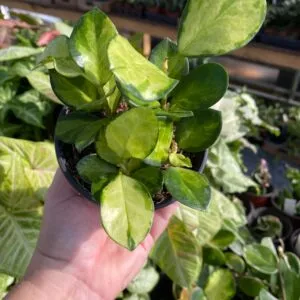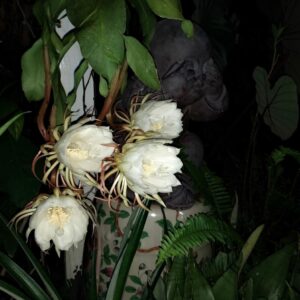No products in the cart.
Table of Contents
Wow, is all we can say that the Philodendron ‘Painted Lady’ is a collector’s dream come true. Just look at that neon yellow-green foliage.
Imagine this plant standing in your home. It will become an eye-catcher for all passing through your living space. Do you want this lush green plant with pink stems?
Then stay with us longer to find out where you can get your hands on one.
More About the Philodendron Painted Lady
Now, the Painted Lady is not like your other Philodendron plants. Instead, it is a variegated climbing plant preferred by collectors. The plant is also a hybrid of two Philodendron parent plants.
The one is the Philodendron erubescens ‘Emerald Queen’ and the Philodendron erubescens ‘Burgandy. It was not a discovered plant but cultivated and is part of the Araceae family. The botanist Robert McColley created the plant in 1960.
The name comes from the leaf spots as if brushed by hand. Hence, it remains a tropical climbing plant to grow indoors and outside. The plants grow lush foliage but seldom bloom. Still, it is a cream, white, or green color in late spring and summer when it flowers.
But, the flowers do not smell very well and only take up the plant’s nutrients, and removing them is best. It is also a self-heading plant with an upright growth spreading outwards. The young leaves are neon, but the color changes to a deep green with blotches as it matures.
It also has heart-shaped leaves with a glossy texture a. The good news is that these indoor plants are slow growers reaching up to five feet with some support. The growth rate can vary, taking up to five years to mature.
As with any houseplant, the tree hugger also goes into a dormant period in winter. It will stop growing and needs not much care at this stage. So, if you are a prolific plant breeder interested in the Painted Lady, stay a bit longer.
Philodendron Painted Lady Care

The Painted Lady prefers drier soil and thrives in warm environments. Caring for the Painted Lady is no different than other tropical plants.
Ideal Soil Mix for Painted Lady
Give your Painted Lady plant moist, rich soil, and she will love you forever. A well-draining potting soil like a cactus mix works well.
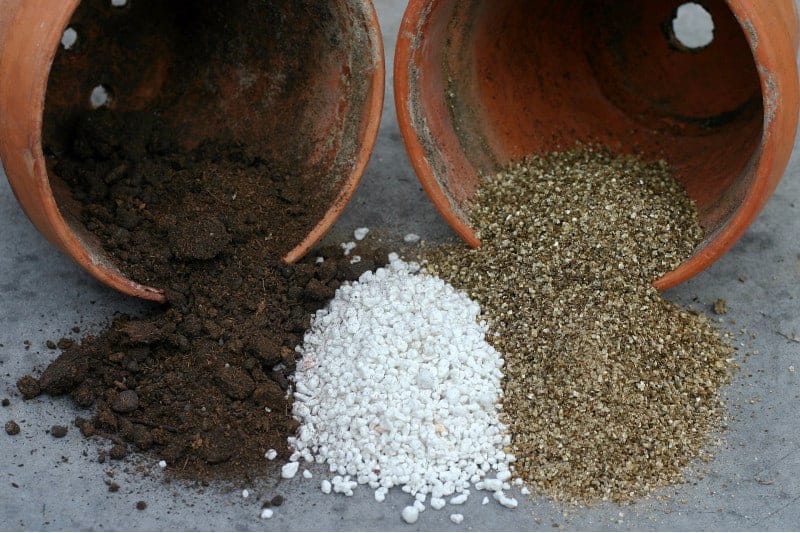
Still, it needs to be airy no matter what potting mix you use. If you live in the USDA hardiness zones 9b to 11, you can grow your Philodendron ‘Painted Lady’ plant in the garden.
But in zones 4a to 11, you can also place it on the patio in a container. To grow your Philodendron plant in a pot, you can use a potting mix with some sand to improve the drainage.
Light Provision for Painted Lady
When it comes to Painted Lady Philodendron’s care and light, it flourishes in bright indirect light. It can also survive in low lit rooms. But preferably, place your plant in a room with enough sunlight.
Still, when placed near a window, place your plant so that the direct sunlight does not damage the foliage. This plant indoors is so great that it can live in medium-light to even partial shade.

With direct sunlight, the leaves turn brown and result in yellowing, while too little light makes the stems grow leggy. When you grow them in hanging baskets, they look great. You can plant outdoors but cover the plant with a shade cloth to create bright indirect sunlight.
Watering Requirement to Prevent Root Rot
This Philodendron genus prefers staying dry and does not like wet feet. Hence, it helps to let the soil dry by watering. While it needs frequent water but never keeps the plant standing in water.
We recommend the soak and dry watering schedule. So, you can water well and wait for the soil to dry.
Then, you can watch the soil’s moisture with your finger or a moisture meter to check if it is dry or wet. Overwatering will result in your plant’s death.
You will find that you will water more in summer than in the winter months.
Temperature and Humidity Need
Okay, now this is one department the Painted Lady is fussy as it is not temperature tolerant. So, it cannot withstand extreme warm or cold temperatures.
As soon as you notice the weather changing, we recommend moving your plant indoors. Yet, your Philodendron plant should not stand close to drafts from windows, air conditioners, or vents.
What the plant loves is humidity. So, if you live in a drier climate, you can use a humidifier to improve the moisture levels. You can also give your tropical plants a light misting during spring and summer.
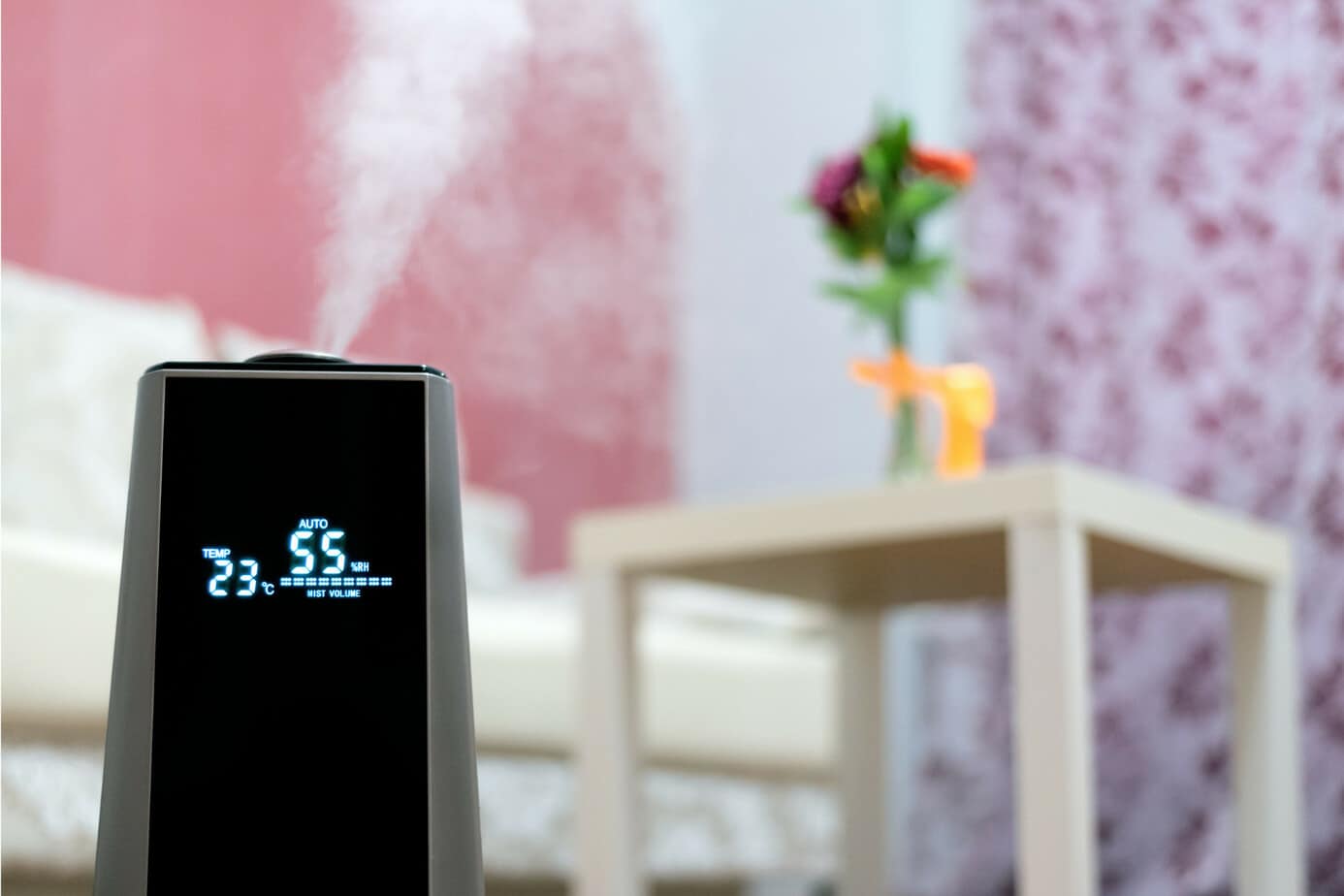
Still, never allow the water to remain on the foliage as it can lead to pest infestations and the breeding of diseases.
Fertilizing

It is a collectors plant mainly for the foliage. You can use an all-purpose fertilizer. You can use a liquid fertilizer every two weeks in the growing season. Or you can use a slow-release fertilizer three times a year.
Yet, there is no need for feeding your Philodendron ‘Painted Lady’ much in winter, and once a month is enough.
Philodendron Painted Lady Propagation
If you want one of the easiest plants to propagate, you are looking at it right now. Propagation of Philodendron plants is simple by using stem cuttings. Here we have two methods you can ensure you have multiple Philodendron ‘Painted Lady’ plants.
Propagation Philodendron Plants Water
Choose a healthy stem from the mother plant to cut about six inches above a leaf joint during the growing season.
Remove the lower leaves to expose the nodes and leave them to dry for a day.
Next, get a jar, put some water, and place your stem cutting inside the container.
Alternatively, you can also place your cutting in a jar with perlite, vermiculite, or soil.
Using water propagation, leave at least a one-inch space at the top. Preferably use distilled water, but leave the tap water to stand overnight if you have no choice. Doing this helps the chlorine to evaporate.
Also, ensure that the upper leaves do not touch the water.
Keep replacing the water every three days and leave it standing in bright indirect sunlight.
Your cutting should root within 20 days and once the roots reach a length of five inches you can transfer them to the soil.
In stock In stock In stock In stock
Free Shipping
$12.00
Sold By:
D&D simplicity products
Baby Sun Rose / Aptenia Cordifolia
Sold By:
D&D simplicity products
$24.95
Sold By:
Willows Bonsai
6 pack Green Japanese Maple Pre Bonsai
Only 6 available and it’s in 1 people’s basket
Sold By:
Willows Bonsai
$11.99
Sold By:
BubbleBlooms
Haworthia cymbiformis, Cathedral Widow, Rare Haworthia, 3 inch pot, well rooted
Rated 4.81 out of 5 based on 279 customer ratings00
Sold By:
BubbleBlooms
Free Shipping
$39.99
Sold By:
Aloha Hawaii Orchids
$44.99Orchid Dendrobium Antennatum live plants Antelope New Guinea Spikes | Fragrant Scent From Hawaii
Only 3 available and it’s in 1 people’s basket Rated 4.65 out of 5 based on 268 customer ratings00
Sold By:
Aloha Hawaii Orchids
Air Layering Propagation
This is an exciting method as you can propagate the parent plant before you even take cuttings.
Get some sphagnum moss and choose a healthy mature plant stem to wrap your moss around one of the nodes as support.
First, you can soak the moss as it creates a humid environment for new growth. You can also wrap it with transparent plastic to keep the moss secure.
An important note is not to wrap any leaves as it will lead to leaf rot. Also, keep a small opening to promote air circulation.
Keep spraying the moss to keep it moist, and new roots should appear within three days or more.
Once you notice new roots remove the moss and make a stem cutting below the node.
Place your cutting in a transparent cup with some fresh, moist moss and care for it until you can transplant it.
The Parent Plants of the Painted Lady
While you can find many Philodendron varieties to grow in your home or garden. We decided to show you where your Painted Lady came from. Here are the two different plant varieties used to cultivate this gorgeous plant.
Philodendron erubescens Emerald Queen Plant
The tropical plant grows in Central and South America, and yes, it is a vigorous climber, so all the same features are seen in your Painted Lady. The heart-shaped leaves can grow up to 16-inches long and is dark green with a glossy look. The underneath of the leave is a burgundy color.
Philodendron erubescens Burgundy Plant
The other parent plant from the Painted Lady plant is the Philodendron Burgundy, also known as the Blushing Philodendron. It is a compact climber with evergreen foliage in reddish-green. Compared to the heart-shaped leaves, this one has triangular-ovate leaves and is red-purple underneath.
In stock In stock In stock
Free Shipping
$24.97
Sold By:
Grow Your Own Food Nursery
$29.97bay leaf tree
Only 2 available and it’s in 1 people’s basket
Sold By:
Grow Your Own Food Nursery
$61.99
Sold By:
Succulent Oasis
Air Plant Mature Live Spanish Moss | A silvery-gray plant that is so unique.
Only 6 available and it’s in 3 people’s basket Rated 4.84 out of 5 based on 352 customer ratings00
Sold By:
Succulent Oasis
$11.99
Sold By:
BubbleBlooms
Syngonium, Cream, podophyllum, 4 inch, Arrowhead Vine, philodendron, goosefoot, nephthytis evergreen
Rated 4.81 out of 5 based on 279 customer ratings00
Sold By:
BubbleBlooms
Painted Lady Philodendron Diseases & Pests
The Philodendron Painted Lady does get problems like most other houseplants. One common pest is the mealybug feeding on your plant. Other insects are spider mites, and both these pests you can treat using an insecticide or even soap water kill. Or you can use neem oil for an organic solution.
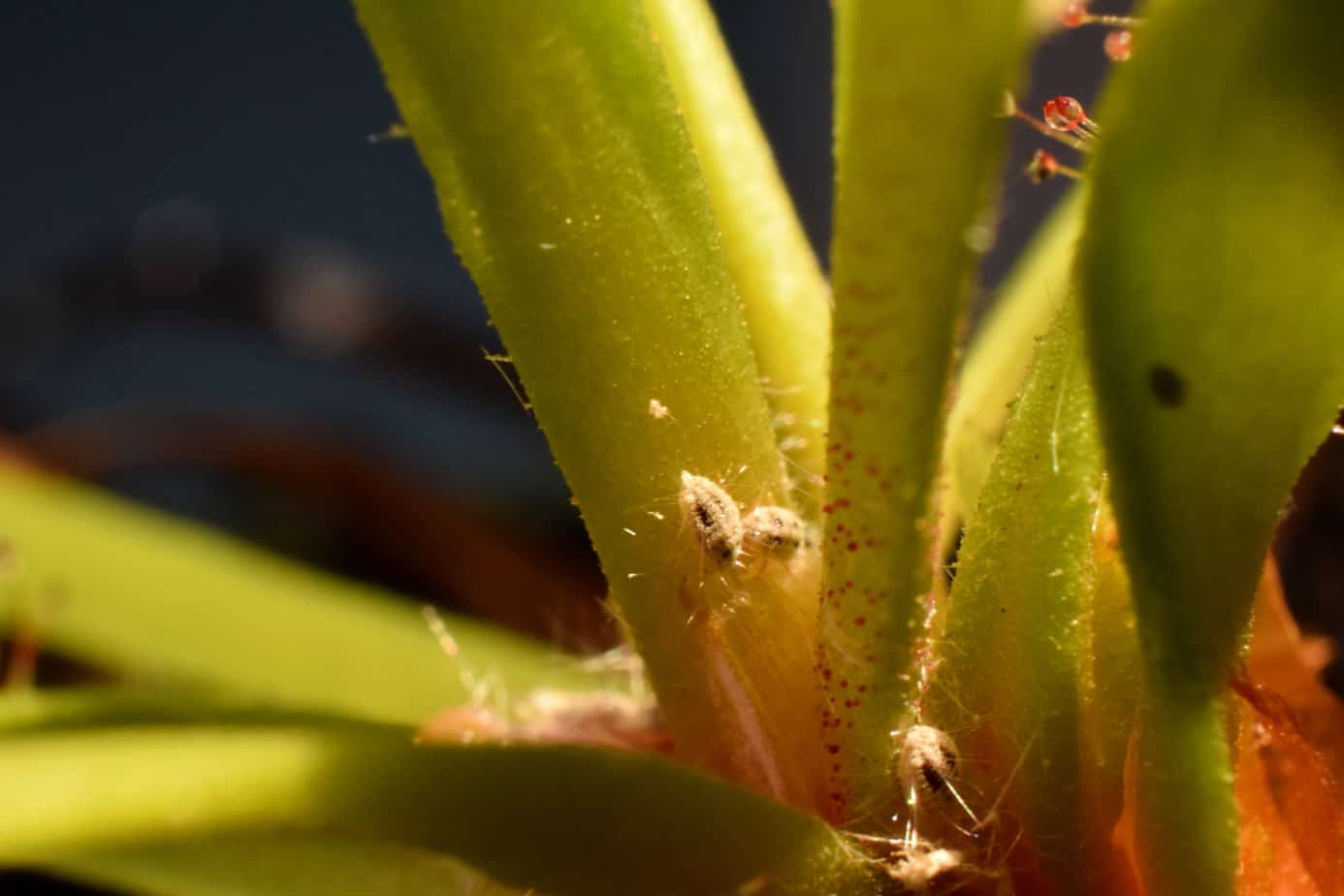
If you notice your plant wilting and yellowing, it can be from soggy soil resulting from overwatering. The main problem can be that the container does not have enough drainage holes. As a result, the roots suffocate, and solving the problem is to only water when the top inch of the soil is dry.
We recommend removing your plant to check the root ball for root rot. If the root system looks sick, remove the damaged parts. Then place your plant in well-draining soil. For any signs of brown spots, your plant is getting too much sunlight.
You can move your Painted Lady into indirect light. Another bacterial disease is leaf spot, and you will see brown spots developing on the foliage. We recommend watering your plant at the base and removing the damaged leaves.
To treat your plant for leaf spots, you can use a copper fungicide. Unfortunately, the Philodendron Painted Lady can also get bacterial blight and noticeable with dark green areas on the leaves. In addition, the foliage starts to wilt, and it gives off an unpleasant smell.
The same rule applies do not do overhead watering to prevent the stem and leaves from remaining wet. Another concern is overfertilizing, which results in a tip curl or the leaves turning brown.
If you used a slow-release fertilizer, you could reduce your feeding and give the soil a good flush with water. Alternatively, you can consider re-potting your plant into a fresh potting mix.
Frequently Asked Questions
The Painted Lady is a rare plant as the commercial demand outweighs the supply of this tropical plant.
The Painted Lady is a vining plant as it is a hybrid between the Emerald Queen Philodendron and the Philodendron Burgandy plant, both climbers.
The interesting name is the spots you see on the heart-shaped leaves look as if someone took a brush and painted it on.
While the Painted Lady is a rare plant, it is not impossible to find one. You can find the plant at different online nurseries. Or you can browse through Plantly’s collection here.
Whether you want to buy, sell or simply reach out to other plant enthusiasts, Plantly is the right place to be!
In stock In stock In stock In stock (can be backordered)
$16.00
Sold By:
BubbleBlooms
$25.00Blushing Philodendron | Red-leaf Philodendron | Philodendron erubescens
Only 998 available and it’s in 3 people’s basket Rated 4.81 out of 5 based on 279 customer ratings02
Sold By:
BubbleBlooms
$18.00
Sold By:
Smoot's Farm
Hoya Australis Lisa 4 Pot Live Starter Plant
Rated 4.89 out of 5 based on 27 customer ratings00
Sold By:
Smoot's Farm
$19.95
Sold By:
SunSoul Plants
El Capitolio Red tropical hibiscus in 4″ pot
Rated 4.87 out of 5 based on 98 customer ratings00
Sold By:
SunSoul Plants
Free Shipping
$24.99
Sold By:
Gar-Zen Botanical Design
Epiphyllum Oxpetalum Cereus Night Orchid Ships Free.
Only 35 available and it’s in 1 people’s basket Rated 4.86 out of 5 based on 49 customer ratings00
Sold By:
Gar-Zen Botanical Design

